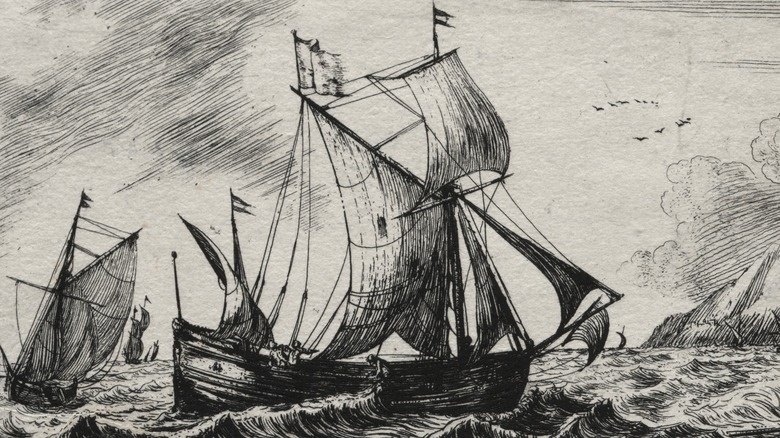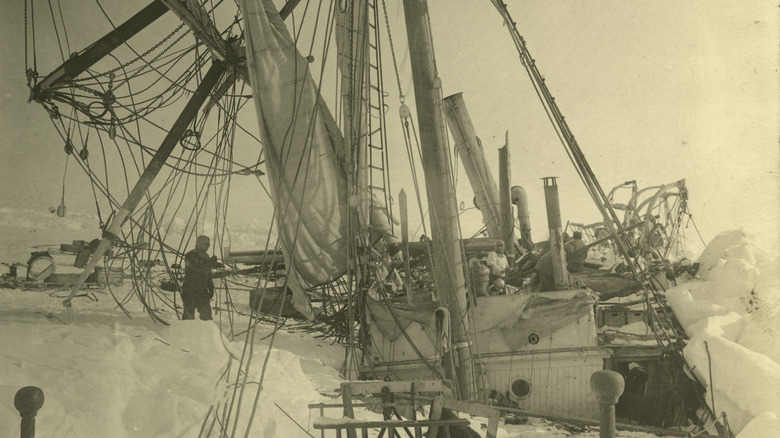The Unexpectedly-Intact Cargo Found On A 375-Year-Old German Shipwreck
The ocean floor is a treasure trove for those seeking to uncover the secrets of maritime past. From the Arctic to the Antarctic, the Mediterranean to the South China Sea, the remains of seafaring vessels litter the ocean floor. According to Popular Mechanics, there are an estimated 3 million of them, and less than 1% have been explored. Some are bare bones of the vessels they once were, but others, like one found in 2020 at the bottom of a German River, are remarkably intact.
In July of 2022, researchers announced their well-preserved find. Dr. Fritz Jürgens (above) of the Institute of Prehistoric and Protohistoric Archaeology at the Kiel University in Germany described it in a university news release. "You always hope to make a find like this and suddenly you have one right before your eyes. It is really unique — also for me personally," he said.
The ship dates back almost 400 years. Its cargo of quicklime, which was a popular construction material at the time, was also remarkably preserved. According to Live Science, nearly 70 barrels of the substance were found on the ship, with another 80 barrels found in the water around the wreck. Work crews discovered the wreck 36 feet down in the Trave River in northern Germany while measuring the waterway (via Gizmodo).
What the find tells us
The discovery of the nearly intact ship — a galliot, similar to the image above — provides a rare glimpse into an era called the Hanseatic period, the period from the 13th to 17th centuries when several trade guilds from Northern Europe joined forces to dominate the Baltic and North seas (via Live Science). Researchers believe the ship was in such excellent shape because it likely sank quickly and was covered in mud, protecting it from rot as well as from being eaten by shipworms.
"We have something like a time capsule that transmits everything that was on board at that moment," Manfred Schneider was quoted as telling Live Science. Schneider is the head of the Hanseatic City of Lübeck's archaeology department and a leader on ship's salvage team. He went on to tell Live Science, "It throws a spotlight on the trade routes and transport options at the end of the Hanseatic period."
Other notable shipwrecks
Ships have been sinking for as long as they've been sailing the seas. And shipwrecks have long captivated the imaginations of history buffs and adventurers alike. The oldest shipwreck found so far, according to Guinness World Records, is the Dokos, located in 1975. Archaeologists believe it sunk somewhere around 2700-2200 B.C. The ship itself is gone, but the items it carried still remain on the bottom of the ocean off the coast of Greece.
The Endurance (above) is one of the most famous shipwrecks because of the remarkable story of what happened after it sank off the Antarctic Peninsula over 100 years ago. After the Endurance was crushed by ice, its crew survived on ice floes and later on an uninhabited island, via Popular Mechanics. The ship's explorer captain, Sir Ernest Henry Shackleton, and a handful of crew members then set out on an 800-mile trek aboard a lifeboat to get help. Eventually, all 27 of Shackleton's crew were rescued. The wreck itself was located last March (per The New York Times).
As for the find of the ship in the German river, a team is deciding whether or not to haul the ship out of the water to preserve what's left on dry land (via Gizmodo). Manfred Schneider, head of the city of the Hanseatic City of Lübeck's archaeology department, says salvaging the wreck will likely uncover parts of the ship still unknown as well as common objects from back in the day when the ship sailed the waters (via Live Science).


